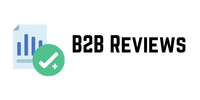In our guide to optimising marketing funnels, we explain the importance of capturing leads at every stage of the funnel and nurturing them towards the next conversion goal. The funnel visualisation below shows the various stages of the consumer journey and how awareness gradually turns into purchase intent and action at the final stages of the funnel.
Google normally shows ads to users who type in search queries demonstrating some kind of purchase intent. So most of the people who see your ads in Google Search are already in the latter stages of the funnel, even if the awareness and interest is in your products/services more than your specific brand at this point.
Meanwhile, organic content is more prominent for informational searches that cover the earlier stages of the funnel. We’ll discuss what this means in more detail later but, for now, the key difference here is that PPC leads typically demonstrate a higher purchase intent than SEO leads.
High-intent vs low-intent leads
Aside from the fact that users whatsapp number database demonstrating purchase intent are more likely to see ads, you can target high-intent keywords specifically in Google Ads to capture prospects ready to make the purchase.
This is the big strength of PPC and you might be wondering why you can’t simply put all of your budget into high-intent traffic to maximise sales.
There are two problems with this: cost and scale. Sooner or later, your advertising budget is going to max out and you’ll hit a point of diminishing returns followed by a decline as keywords become more competitive, CPCs increase and you’re winning fewer customers for your money.
With PPC, you’re constantly paying for each individual lead but a functioning SEO strategy continues to capture leads over time. And, more importantly, if you continue to invest in your SEO strategy, the returns increase over time as your search presence keeps growing.
The other issue with scale is that a very small percentage of your potential future customers are in the latter stages of the funnel at any given time. In fact, most of them aren’t in the funnel at all yet so you’re dramatically limiting your growth prospects by only targeting high-intent PPC leads.
The vast majority of your future growth and revenue is in organic search.
Shorter vs longer time-to-convert
Another characteristic of this purchase the content is therefore provided to the influencer intent difference is the time-to-convert of SEO and PPC leads. This describes the time it takes from the first interaction (click) for the same user to complete the first conversion goal (eg: purchase). Generally speaking, the time-to-convert is shorter with PPC leads, especially when you’re targeting high-intent keywords.
Likewise, the time-to-convert tends to be longer for SEO leads, particularly when they are in the early awareness stage of the funnel. Later, in this article, we’ll explain how you can use PPC and SEO together to nurture leads at the top end of the funnel into high-intent, bottom-of-the-funnel prospects.
Transactional vs informational
Even for searches that demonstrate china business directory purchase intent, informational queries suggest users are looking for key details to inform a future purchase. For example, someone who types in “best shoes for running on concrete” is less likely to click on a product listing than an organic result addressing their concern.
